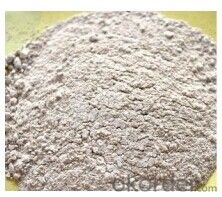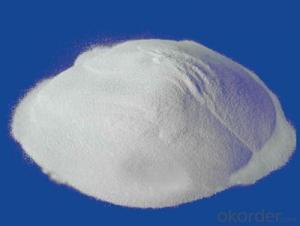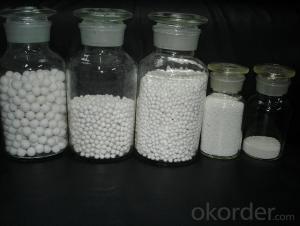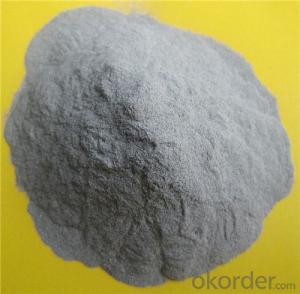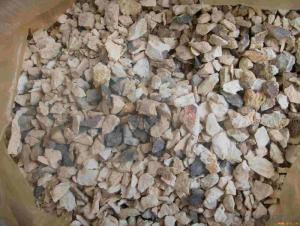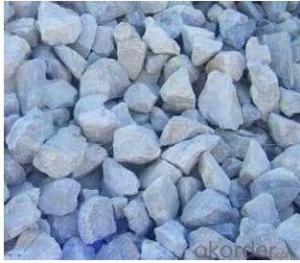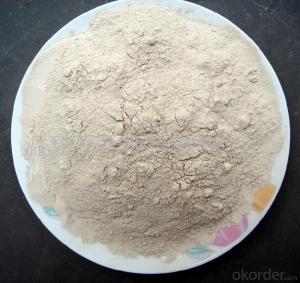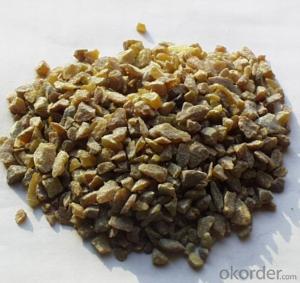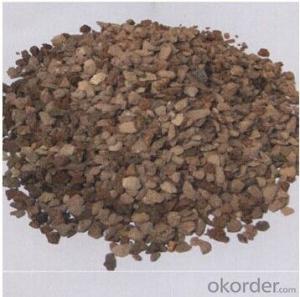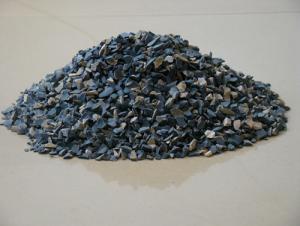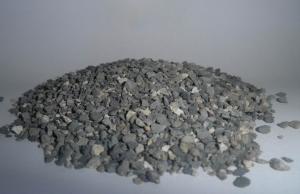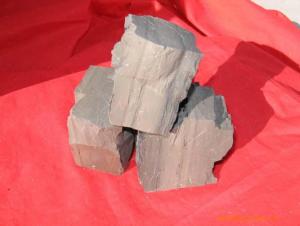Raw Materials for Refractory:Calcined Magnesite Powder
- Loading Port:
- China Main Port
- Payment Terms:
- TT OR LC
- Min Order Qty:
- -
- Supply Capability:
- -
OKorder Service Pledge
OKorder Financial Service
You Might Also Like
Specifications
Caustic Calcined Magnesite Powder
Product Category: 85 Grade,80 Grade,75Grade,70Grade
Caustic Calcined Manesite Ball
Caustic Calcined Magnesite Powder
Product Category: 85 Grade,80 Grade,75Grade,70Grade
Caustic Calcined Manesite Ball
Product Category: 85 Grade,80 Grade,75Grade,70Grade
Caustic Calcined Manesite Ball | Product Grade | |||
Product Category | 85 | 80 | 75 | 70 |
MgO content | 85% | 80% | 75% | 70% |
Calcium oxide(CaO) | 2.5% | 2.5% | 3% | 3% |
Loss On Ingition | 7% | 10% | 12% | 16% |
Silica SiO2 | 6% | 8% | 10% | 10% |
Particle size | ≤ 120 | ≤ 120 | ≤ 120 | ≤ 120 |
No. Item Result
1 MgO % 98%min
Clarity Test OK
2 CaO 0.2%max
3 Fe 0.0075%max
Cl 0.035%max
SO4 1.0%max
4 Insoluble matter in acid 0.1%max
Heavy Metal 20ppm max
5 Bulk Density 0.32g/ml
Heating Loss 0.8%max
6 Screenings 250 99.5%
- Q: What is the common inorganic fireproof and thermal inuslation matertial?
- 1. The thermal insulation material of level A combustion performance: Rock wool, glass wool, foam glass, foamed ceramics, foam cement, hole-closed perlite, etc. 2. combustion performance is level B1 insulation materials: Extruded polystyrene board (XPS) after special treatment / Special treatment of polyurethane (PU), phenolic aldehyde and gelatine powder polyphenyl granule 3 combustion performance is level B2 insulation material: Molded polystyrene board (EPS), extruded polystyrene board (XPS), polyurethane (PU), polyethylene (PE), sea capacity module and vitrified micro bead. (Hope I can help you! Hope you adopt. Thank you! )
- Q: Can anyone tell me what material the first rate fire resistant door is?
- Material of Class A fire doors mainly are steel, wood, steel and wood, and other materials. Fire door is one of the measures of the building fire separation, usually used on the firewall, entrance and exit of staircase or tube well openings, which is required to hane the abilities of smoke insulation and fire insulation. Fire door plays an important role in prevention of the spread of smoke and fire and the reduction of fire loss. Therefore, we must have strict requirements. Fire doors are divided into class A, class B and class C, whose properties of fire-resistant thermal insulation and fire-resistant integrity should be no less than the following values: Class A should be1.50h; class B should be1.0h; Class C should be 0.5h. - stipulations in article 4.5.1.2 in "The New Standard of Fire Doors" GB12955-2008. I hope my answer can help you. Thank you.
- Q: Can quantitative feeder be used in refractory plant? Thank you
- Feeder experts, justice and analysis, quantitative feeder, of course, can be used in refractory plants
- Q: How to divide fire rating of decorating materials ?
- level A: incombustible, B1: Flame retardant, Level B2: combustible, Level B3: Flammable.
- Q: Kinds of refractory mortar
- It needs no heating when hardened. There are two kinds of refractory mortar, the finished products and semi-finished products. Clinker is compounded in proportion according to the hardening temperature. (3) Chemical bonding refractory mortar is made from refractory aggregate and chemical binders (inorganic, high alumina refractory mortar). After this refractory mortar with thermal hardness is hardened, it has some contraction. Ther is a wide variety of refractories used on the constrcuction sites: // a, Advanced refractories (1770 ~ 2000 ℃) and AAA level refractories (2000 ℃ above). It can only be delivered in dry state. Air hardening refractory mortar is often compounded air hardening binders such as sodium silicate. It will harden below ceramic bonding temperature. According to different binding agents.
- Q: What is the principal part of silicious refractory material
- Silicon nitride and aluminite powder as well as dextrin
- Q: Why does refractory need to add coarse firstly and then add fine aggregate?
- Oh, adding coarse aggregate first is to select good material to make aggregate, and the rest cna be made into fine aggregate. Because if it contains impurities, once being sintered, the appearance will be affected, but fine aggregate does not have this impact.
- Q: What needs to be noted when choosing and using blast furnace fireproof materials? Who knows?
- there are different temperatures in various parts of the blast furnace, thus using different types of refractory.
- Q: Who knows about ranking rules of fireproofing thermal insulation materials for exterior wall?
- You can try the following way to give a brief introduction of the fire?rating classification of external wall thermal insulation materials. 1. the building materials are divided into following categories in terms of combustion performance according to the national standard of GB8624-97. A-level: Incombustible building material: materials almost don't burn. B1-level: nonflammable building material: these materials are good at resisting flame. It is difficult for them to burst into fire when coming across open fire in the air or at high temperature. It will not quickly get wilder and when the fire source removes, it will be extinguished immediately. B2-level: Combustible building material: combustible building materials can play a certain role in flame resistance. It will immediately burst into flames when coming across open fire or at high temperature, and will lead to fire spreading, such as wooden column, timber roof truss and timber beam as well as stairs. B3-level: Inflammable building material: Inflammable building materials are highly flammable with no flame retardant ability. The fire risk is high. 2.The exterior wall thermal insulation materials can be classified according to fire rating. 1). Insulation materials with A-level combustion performance: rock wool, glass wool, foam glass, foamed ceramics, foam cement, hole-closed perlite, etc. 2). The insulation materials with B1-level combustion performance: specially-treated extruded polystyrene board(XPS)/ specially-treated polyurethane(PU), phenolic aldehydegelatine powder polyphenyl granule,etc. 3). Insulation materials with B2-level combustion performance: molding polystyrene board(EPS), extruded polystyrene board(XPS), polyurethane(PU), polyethylene(PE), etc.
- Q: What kind of materials are needed to make refractory bricks?
- The components of the raw materials of refractory bricks. There are many types of raw materials, mainly divided into six categories: Earth, stone, sand, ore, powder and others. No.1, earth: bauxite, kaolin, clay, kieselguhr. No.2 Two: stone: fluorite, kyanite, andalusite, forsterite, vermiculite, mullite, pyrophyllite, chlorite and dolomite, sillimanite and spinel, silica. No.3: sand: ceramic sand, zircon sand, quartz sand, magnesia. No.4, ore: chrome ore. No.5, powder: Metal powder, silicon powder, metal powder. No.6, others: Asphalt and graphite, phenolic resin, perlite, cenosphere, sialon corundum silicon sulfate, silicon carbide, water glass, silica sol, boron carbide, calcium aluminate cement, nitride materials, shale ceramsite, alumina, aluminum sol, zirconia.
Send your message to us
Raw Materials for Refractory:Calcined Magnesite Powder
- Loading Port:
- China Main Port
- Payment Terms:
- TT OR LC
- Min Order Qty:
- -
- Supply Capability:
- -
OKorder Service Pledge
OKorder Financial Service
Similar products
Hot products
Hot Searches
Related keywords

